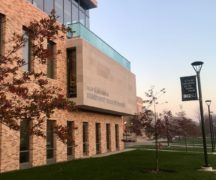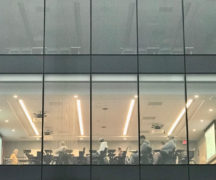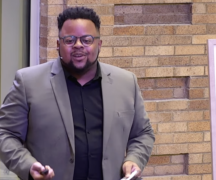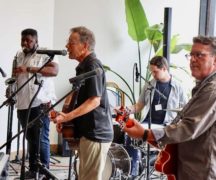By DAVID DUPONT
BG Independent News
The new Robert and Patricia Maurer Center was designed before COVID-19 was a concern.
Yet the building with its wide-open spaces and nooks and crannies works well in a time when de-densifying is a byword.
Classrooms designed for 60 can easily accommodate fewer students socially distanced.
Classrooms tricked out with technology to connect students with the world come in handy when some students need to log in from home.
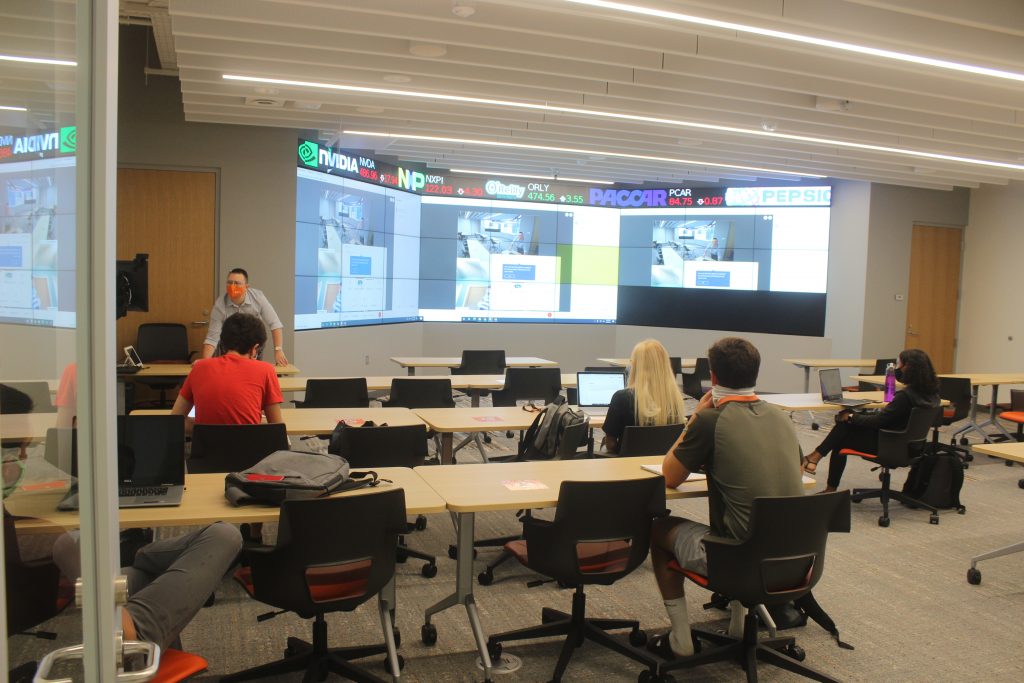
Stephen Rush teaches finance in the immersive classroom located in the space formerly occupied by the Gish Theater stage. The room is equipped with three video panels, each made up of nine screens., and he uses them all for content and virtually bringing a student into the classroom.
“That remote student can truly participate,” Rush said.
The same technology can be employed to beam in a speaker from Wall Street, Ray Braun, dean of the Allen W. and Carol M. Schmidthorst College of Business, said later.
Having information from Bloomberg including how well the BG investment fund is doing flashing on the screens, is useful, said Janae Johnson, a student in the Rush’s class.
Johnson said she also attends meetings here for Campus Ambassadors and the dean’s advisory council on diversity and inclusion. It allows everyone to attend whether live or remotely. The room is wired so cameras sense who is speaking and focus on them.
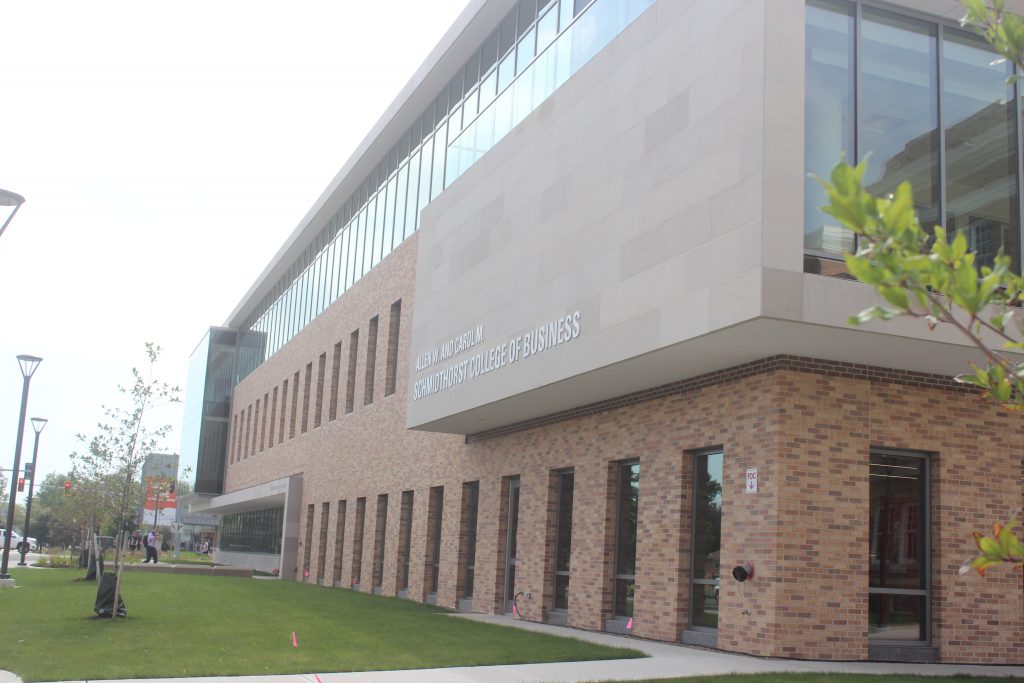
Two weeks into the semester, the building is well used. Students populate the atrium and patronize the Starbucks café.
That atrium is “the shining gem” of the $44.5 million Maurer Center, said Kristi Peiffer, one of the two project managers.
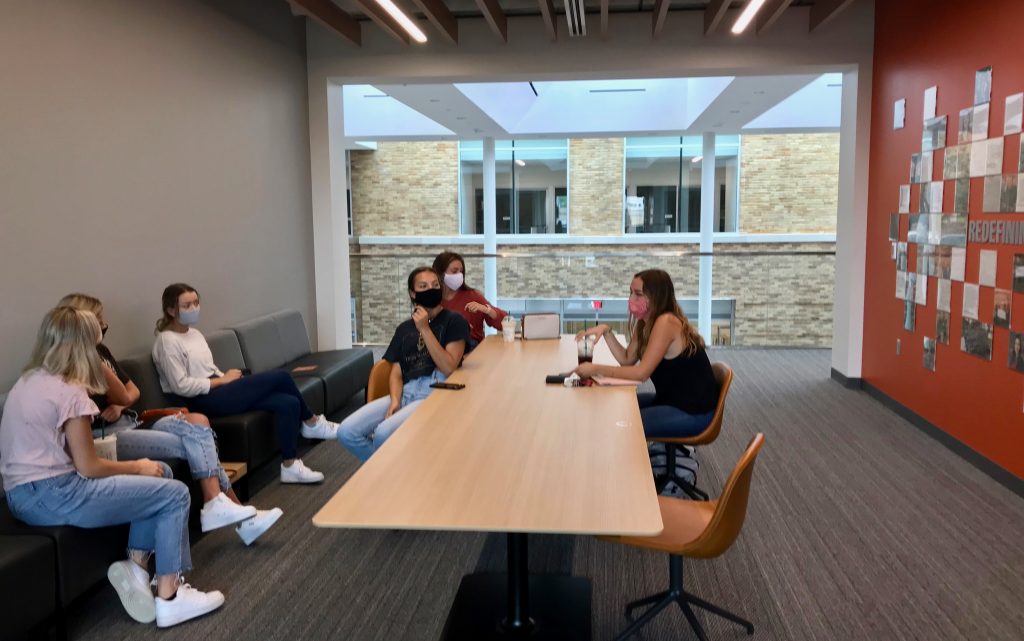
The rest of the building wraps itself around three-story high space.
Off the atrium are two collaboration labs. Overhead doors allow the spaces to open to the atrium, and sliding “sky fold” doors open to create a single space.
When those labs are open and joined with the mezzanine, this offers a space fitting for any event the college wants to host.
The collaboration labs themselves, Peiffer said, are “active learning 2.0” spaces.
This is indicative of what the Maurer Center offers.
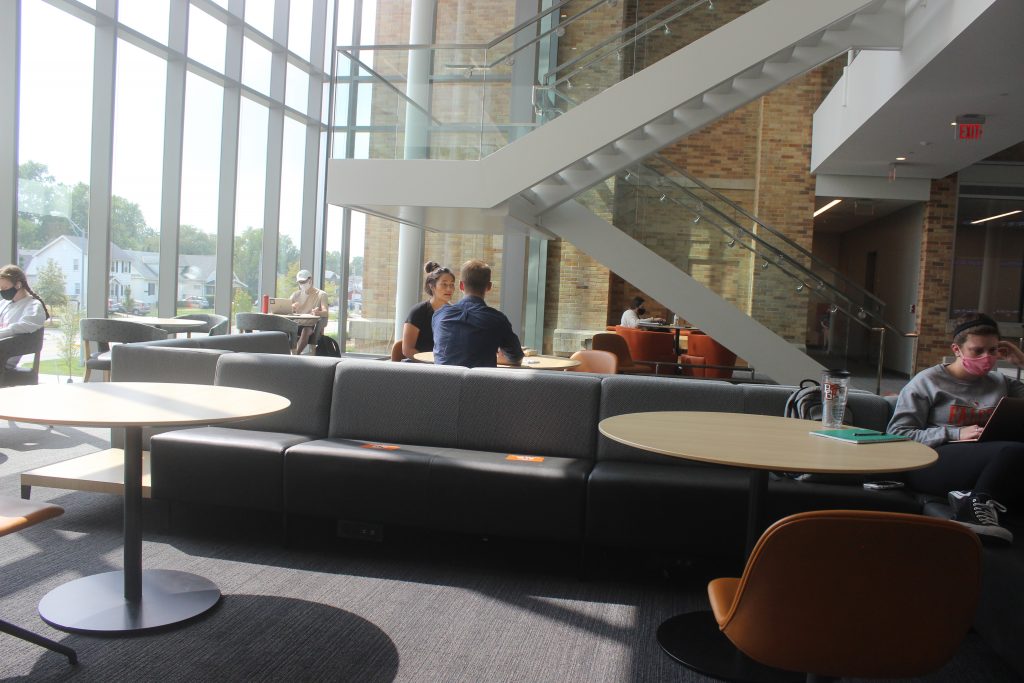
“This facilitates our style of teaching and learning,” Braun said during a tour of the building. “Students will get the best possible experience in these classrooms. The building also resembles a modern corporate office, so students will learn in a place like the office where they will eventually work.”
Provost Joe Whitehead said that facility has plenty of “collision spaces where people collide and collaborate.”
He continued: “it creates a learning environment that’s really conducive to students understanding how things work outside of the university.”
While in the former Business Administration building all the classrooms were on the first floor, now the classrooms, holding from 12-60 students, are interspersed through the building, mixed in with offices, conference rooms, and a variety of informal meeting and study spaces.
Braun looks forward to the time when three times as many students occupy the building.
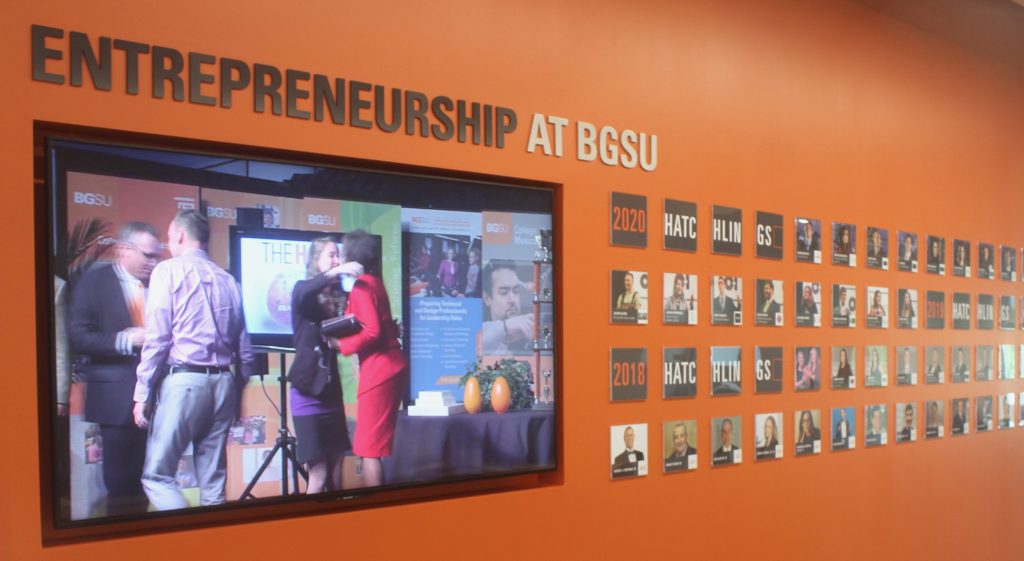
But for now, Peiffer said, “it allowed us to really be flexible when redesigning spaces to meet COVID requirements.”
The new home of the Schmidthorst College of Business has been about a decade in the planning.
Braun, who is beginning his ninth year at BGSU, remembers that discussions for a new building were underway when he arrived.
The original plan was for a new standalone building. That turned into a plan to expand on Hanna Hall, one of the three traditions buildings that form the eastern boundary of the Bowen Thompson Quadrangle. “It is important to keep that legacy alive,” Peiffer said.
The new construction with its open spaces and glass bespeaks of modernity while Hanna maintains a certain stately quality that comes from being over a 100 years old.
“It really brings together the traditional campus with the new modern approach to business education,” Braun said. “Architecturally it’s quite striking.”
What was Hanna Hall’s east facing exterior wall was preserved inside. The entryway onto the quadrangle was renovated while maintaining its traditional look with the original marble, brick, and plaster work.
“We’re proud to be able to keep that,” she said.
On the third floor, a display honors both the building’s namesake Myrna Hanna and the building’s own history.
Hanna was the county’s first female state legislator. She authored the legislation that allowed BGSU and Kent State transition from normal schools to state colleges.
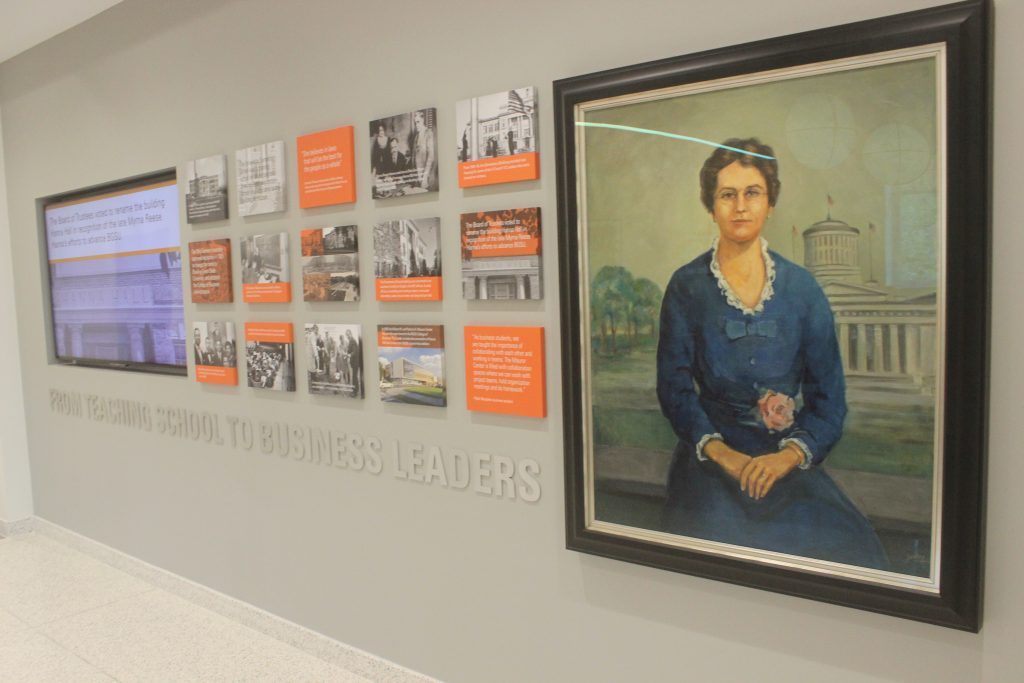
One slide on a video panel in the display notes that Hanna Hall housed a telecourse pilot project, an early form of remote learning.
Peiffer said Hanna Hall is masonry construction, which means every wall is load bearing. The spaces did not suit themselves for the more open space design of active learning classrooms.
It also had a lab school for teacher training.
Peiffer said given that connection it was important to have at least one classroom in the Hanna Hall space.
Mostly that section of the Maurer Center is used for offices.
Technology runs through the building. But those decisions, Peiffer said, were not made until eight months before the building was to open.
“It was the most technologically advanced and comprehensive package we could put together,” she said. “We wanted to be mindful that we weren’t overdoing the technology, making sure it was something that could grow with the building and the students.”
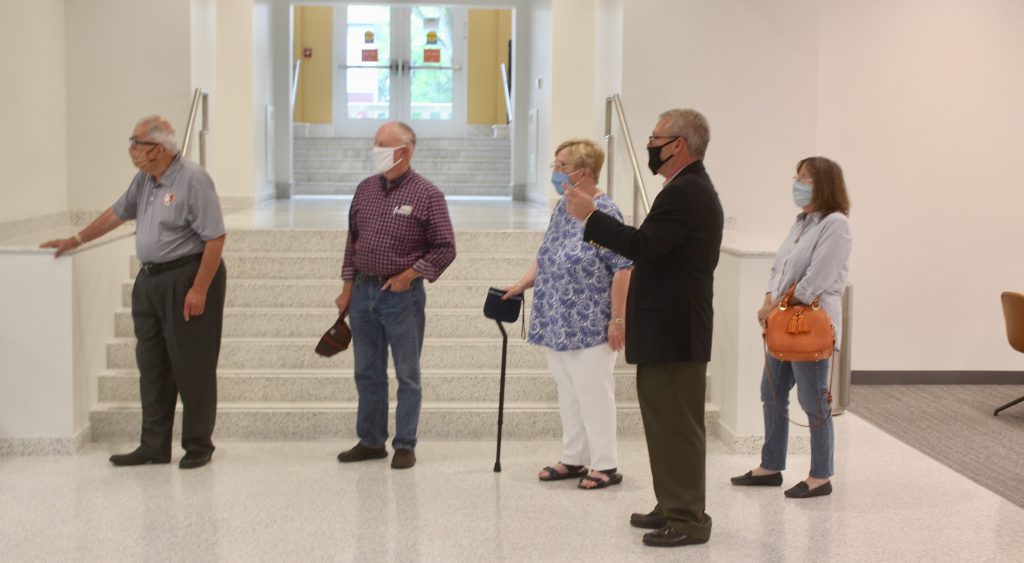
Earlier in the week Braun gave a tour of the building to Bob and Patricia Maurer and Joseph and Judith Conda, also major donors to the university.
The couples were unanimous in their praise of the center.
Asked what impressed him most, Bob Maurer, replied everything.
Patricia Maurer said she like the tickertape that runs along two sides of a pillar in the atrium.
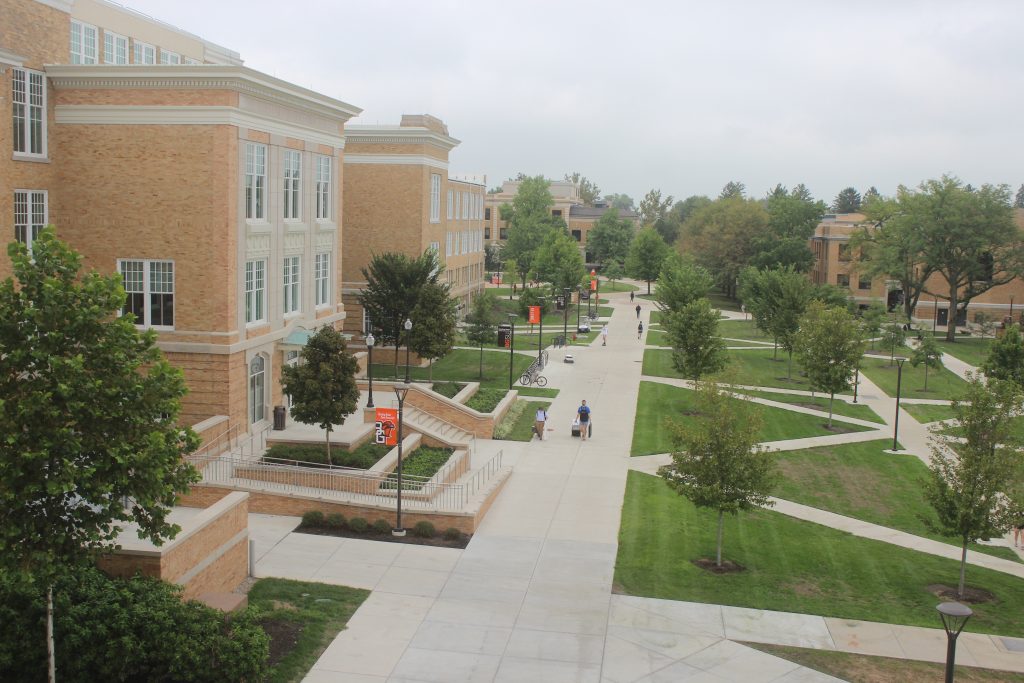
The ticker has five bands with the latest data from the stock, commodities, and currency markets as well as a social media and news feeds, “so students can keep up with the markets as well as breaking news,” Braun said.
That’s a feature, Peiffer said, that has survived all the revisions in design.
On Friday at 6 p.m. a grand opening celebration will be held virtually to recognize donors who helped make bring that design to reality. The event will be livestreamed starting at 6 p.m.


